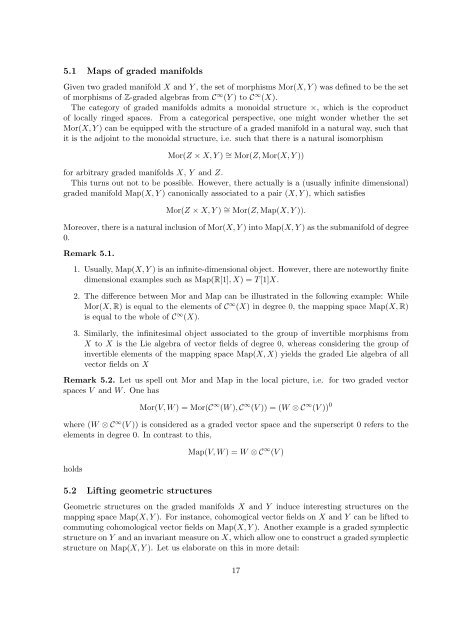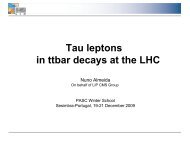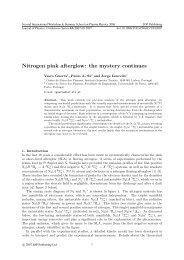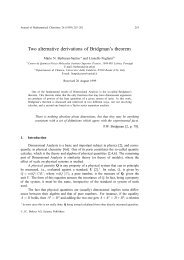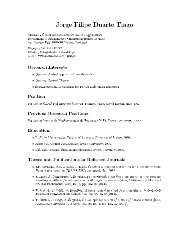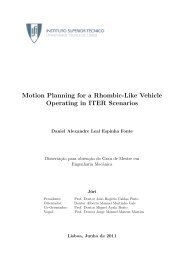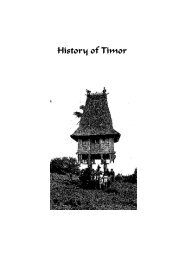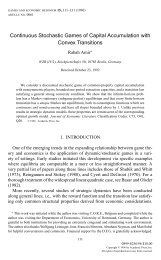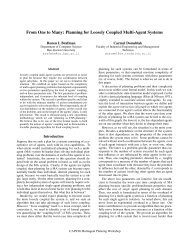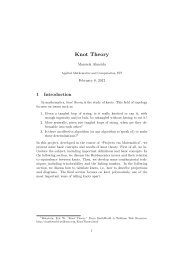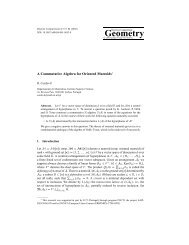Introduction to supergeometry
Introduction to supergeometry
Introduction to supergeometry
You also want an ePaper? Increase the reach of your titles
YUMPU automatically turns print PDFs into web optimized ePapers that Google loves.
5.1 Maps of graded manifolds<br />
Given two graded manifold X and Y , the set of morphisms Mor(X, Y ) was defined <strong>to</strong> be the set<br />
of morphisms of Z-graded algebras from C ∞ (Y ) <strong>to</strong> C ∞ (X).<br />
The category of graded manifolds admits a monoidal structure ×, which is the coproduct<br />
of locally ringed spaces. From a categorical perspective, one might wonder whether the set<br />
Mor(X, Y ) can be equipped with the structure of a graded manifold in a natural way, such that<br />
it is the adjoint <strong>to</strong> the monoidal structure, i.e. such that there is a natural isomorphism<br />
Mor(Z × X, Y ) ∼ = Mor(Z, Mor(X, Y ))<br />
for arbitrary graded manifolds X, Y and Z.<br />
This turns out not <strong>to</strong> be possible. However, there actually is a (usually infinite dimensional)<br />
graded manifold Map(X, Y ) canonically associated <strong>to</strong> a pair (X, Y ), which satisfies<br />
Mor(Z × X, Y ) ∼ = Mor(Z, Map(X, Y )).<br />
Moreover, there is a natural inclusion of Mor(X, Y ) in<strong>to</strong> Map(X, Y ) as the submanifold of degree<br />
0.<br />
Remark 5.1.<br />
1. Usually, Map(X, Y ) is an infinite-dimensional object. However, there are noteworthy finite<br />
dimensional examples such as Map(R[1], X) = T [1]X.<br />
2. The difference between Mor and Map can be illustrated in the following example: While<br />
Mor(X, R) is equal <strong>to</strong> the elements of C ∞ (X) in degree 0, the mapping space Map(X, R)<br />
is equal <strong>to</strong> the whole of C ∞ (X).<br />
3. Similarly, the infinitesimal object associated <strong>to</strong> the group of invertible morphisms from<br />
X <strong>to</strong> X is the Lie algebra of vec<strong>to</strong>r fields of degree 0, whereas considering the group of<br />
invertible elements of the mapping space Map(X, X) yields the graded Lie algebra of all<br />
vec<strong>to</strong>r fields on X<br />
Remark 5.2. Let us spell out Mor and Map in the local picture, i.e. for two graded vec<strong>to</strong>r<br />
spaces V and W . One has<br />
Mor(V, W ) = Mor(C ∞ (W ), C ∞ (V )) = (W ⊗ C ∞ (V )) 0<br />
where (W ⊗ C ∞ (V )) is considered as a graded vec<strong>to</strong>r space and the superscript 0 refers <strong>to</strong> the<br />
elements in degree 0. In contrast <strong>to</strong> this,<br />
holds<br />
5.2 Lifting geometric structures<br />
Map(V, W ) = W ⊗ C ∞ (V )<br />
Geometric structures on the graded manifolds X and Y induce interesting structures on the<br />
mapping space Map(X, Y ). For instance, cohomogical vec<strong>to</strong>r fields on X and Y can be lifted <strong>to</strong><br />
commuting cohomological vec<strong>to</strong>r fields on Map(X, Y ). Another example is a graded symplectic<br />
structure on Y and an invariant measure on X, which allow one <strong>to</strong> construct a graded symplectic<br />
structure on Map(X, Y ). Let us elaborate on this in more detail:<br />
17


